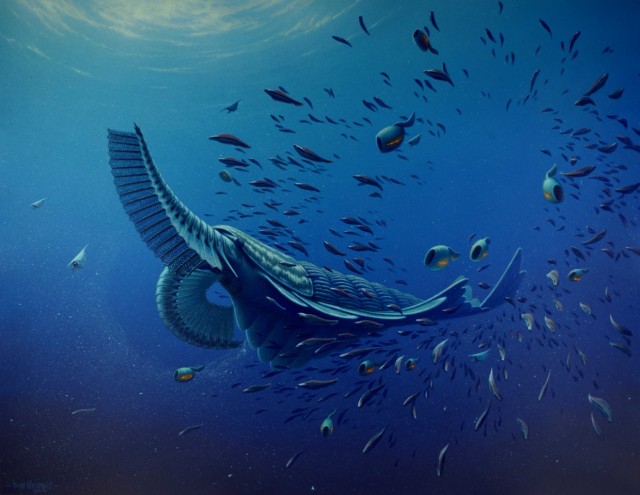Cambrian hunter switched to a plankton diet
Ars Technica » Scientific Method 2014-03-26

The fossilized organisms of the Cambrian period some 500 million years ago are both alien and familiar. A few of them look a lot like the creatures around us today. But even some that don’t look at all familiar hold down ecosystem roles we can easily recognize—photosynthesizers, grazers, predators.
The alien inhabitants of the ecosystem are well-represented by Anomalocaris and its kin. Looking like something out of a sci-fi movie, these arthropod-like animals were probably the kings and queens of the Cambrian seas—the top of the food chain. They grew up to a meter or two in length and swam around in search of prey to seize with the two appendages in front of their round, disc-like mouth.
At least some of them did. New fossils suggest that one anomalocarid species ended up exchanging its role as a top predator for a more sedate lifestyle.
Read 10 remaining paragraphs | Comments